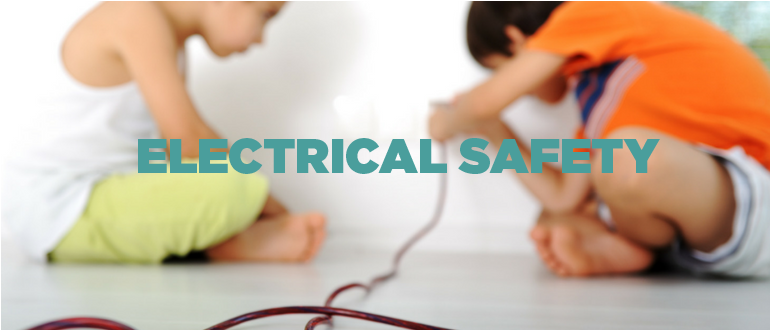In today's modern world, virtually everything that is considered a necessity in the home is powered by electricity. We often take for granted the basic safety, however, bad wiring or defects in the wires can pose a threat to anyone in the house. According to the National Fire Protection Association, 47,700 home fires in the U.S. are caused by electrical failure or malfunction each year. These fires result in $1.4 billion in property damage. Many home fires can be prevented simply by understanding basic electrical hazards like these:
Overloaded Electrical Circuits
The major cause of residential fires is overloaded electrical circuits. To prevent electrical overloads, do not use multi-outlet converters for appliances. All major appliances should be plugged directly into a wall receptacle outlet. Only plug one heat producing appliance into an outlet at a time. It is important to know that power strips only add additional outlets, but they do not change the amount of power produced to the outlet. Some warning signs of an overloaded circuit are:
- flickering, blinking or dimming lights
- warm or discolored wall plates
- mild shock or tingle from appliances, outlets, or wall switches
Extension Cords
Extension cords can be helpful in delivering power right where you need it, however, it is a temporary solution and is not meant to be used as a long-term extension of your household's electrical system. With continuous use over time, extension cords can rapidly deteriorate. A heavy reliance on extension cords is an indication that you have too few outlets to meet your needs and it may be time to consider adding new outlets to your home. Extension cords can overheat and cause fires when used improperly. Check out these extension cord safety tips:
- Do not run extension cords through walls, doorways, ceilings or floors. If the cord is covered heat cannot escape.
- Match the wattage rating on appliances you are using to the cord wattage rating and do not use a cord that has a lower rating.
- Ensure the cord or power strip you use is marked for either indoor or outdoor use.
- Do not nail or staple electrical cords to walls or baseboards.
Fuse and Breakers
Knowing what's inside your electrical service panel is key. Label panels so you can quickly turn off and restore electricity when needed. Fuses and circuit breakers protect overloaded electrical circuits by interrupting the flow of electricity. There are many variations of breakers that offer different levels of protection. All electrical distribution systems should have an electrical inspection conducted if the home is older than 40 years or has had a major addition added. Rates and availability of homeowner’s insurance coverages are dependent upon homes being well-maintained. Preventative upkeep makes your home a much more acceptable risk to insure.
Equipment Breakdown
Forty-six percent of all equipment breakdown losses are electrical in nature. Many of the electrical appliances and equipment that provide convenience, comfort, and safety to you within your home are subject to potential electrical and mechanical breakdown. These types of losses aren't typically covered by the traditional homeowner’s insurance policy, but there is an affordable alternative from your insurer called equipment breakdown coverage. Lighthouse is proud to offer this unique product offering which extends coverage to all of your important home systems and personal property due to loss by electrical or mechanical breakdown. Examples of covered property in a home are wine cooling units, heat pumps, swimming pool equipment, air conditioning systems, electrical panels, televisions and media equipment, as well as other household appliances. Follow the link to learn more about equipment breakdown coverage or ask your Lighthouse Agent today!

